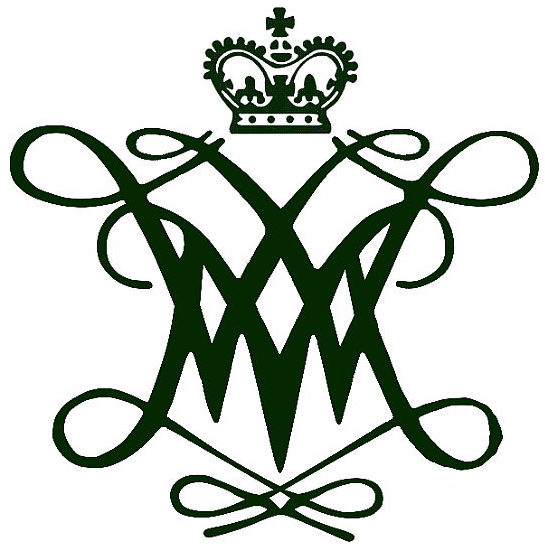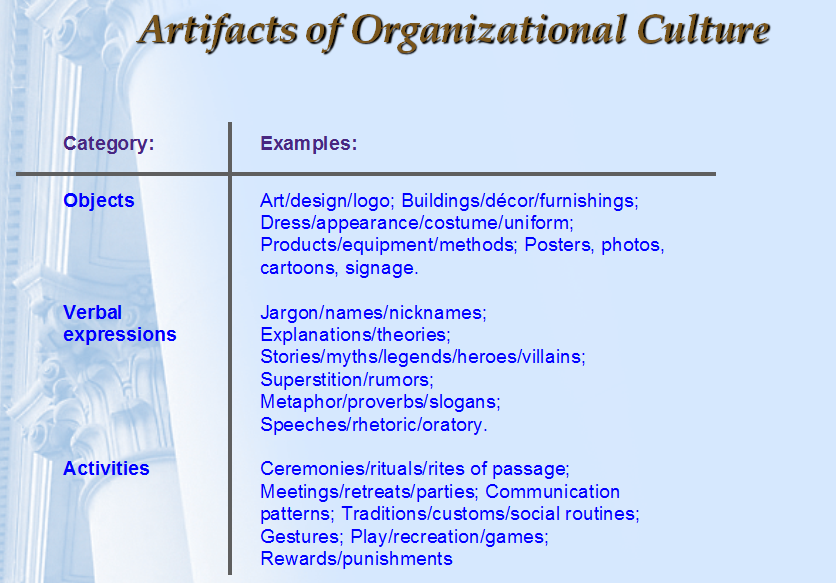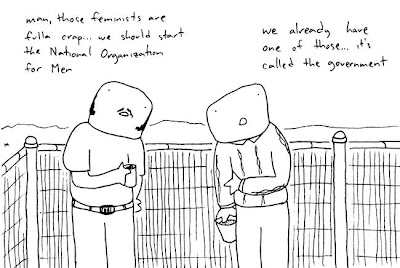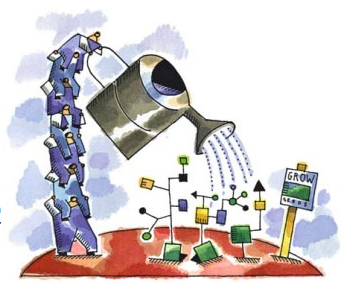Class Session 6
Class Session 6
March 15: Applying Culture in Higher Education
Auggy, Jess, Michele, Sharon, Mike
Abstract |
| Organizational culture can be described as a shared understanding of how all aspects of an organization run: everything from the structural technicalities to the socially accepted behaviors. Because of their complexity, cultures take time to develop. Time is also key for various symbols within the culture to take on shared understandings which truly thrive and accurately represent the organization. Because all the intricate symbols that give structure to the culture are so complex, organizational cultures may be easier to understand when experienced rather than described. This week's lecture and class discussion delved into Schein's three levels of culture. Readings included Pfeffer on the ambiguity of leadership, Tierney's organization of types of symbols used by leaders, and Gumport's discussion of structural and cultural complexity due to the competing loyalties within the college faculty. One final important point is raised by Peterson and Spencer in their discussion of the differences between organizational culture and organizational climate. |
Terms and Definitions: |
| Artifact - According to Schein's three levels of culture, an artifact is something visible in a culture, but not necessarily easily decipherable. Simply, if you can point to it, that is an artifact. More accurately, artifacts include not only objects, but also verbal expressions and activities (See figure "Artifacts of Organizational Culture" below). |
| Value - The second of Schein's three levels of culture, values are the articulated reasons for being and acting. They are not visible like artifacts, but they are not invisible either (like assumptions). Members of the organization can choose to embrace or reject a value. They may also seek to change current values or introduce new values. |
| Assumption - The third of Schein's three levels of culture, assumptions are the underlying framework of a culture. The members of the culture may not even be aware of assumptions because these are on the level of "the way its always been done." Assumptions tend to be invisible and difficult to change. |
| Leadership attribution - The phenomenon of organization members giving power and authority to the leader because of the leadership position. Pfeffer suggests that leadership attribution has more to do with people wanting to believe in the presence of leadership skills than in the actual existence of those skills or any proven effect they have on organizational outcomes. |
| Symbols - Objects that convey a shared meaning through various forms (language, dress, structural roles). These symbols can also take the form of behaviors, organizational stories, metaphors, myths, visions, values, rituals, or ceremonies. Ritual - traditional routines, protocols (initial meetings, celebrations) Ceremony - less frequent than rituals often to mark specific highlights such as goals met (50th anniversary) |
| Culture - The underlying beliefs, assumptions, and values of an institution. Climate - The attitudes and behaviors of an organization that result from and/or reflect the culture. |
| E Pluribus Unum - The metaphor that unity exists within academic work and the academy because of academics' dual commitment to the department and their profession. |
External Sources for Further Exploration: | |
| File:Schein.pdfFile:Schein.pdf This article reviews concepts of organizational culture,how it should be defined,and how it may be of use in the field of organizational psychology. |
A digest review of the research on institutional transformation as it relates to organizational culture. Keup, Jennifer R. - Walker, Arianne A. - Astin, Helen S. - Lindholm, Jennifer A. |
William & [http://www.wm.edu/about/history/traditions/index.php Mary Traditions [http://www.wm.edu/about/history/traditions/index.php Mary TraditionsAnything but traditional. |
The Qualities that Bear on Presidential Performance |
Pfeffer:
Ambiguity of Leadership
Leadership is is related to social influence, however, the terms used to define leadership are subjective.
Problems with the concept of Leadership:
1. Definition and measurement:
2. Whether leadership affects organizational performance
3. Process of selecting leaders
Three reasons why the observed effects of leaders on organizational outcomes would be small:
- Homogeneity of Leaders: Leaders are chosen by the organization for selected, limited styles of behavior. Leaders in organizations are selected by members of the organization who are looking for characteristics in the leader to fulfill certain criteria. They may be looking for a leader who will make decisions similar to their own, or a person who is able to control certain areas of "organizational contingencies." Leaders may have "self-selected" themselves into the organization by choosing to work there because they believe in the philosophy. By selecting leaders to roles within an organization, it could be seen as a self-fulfilling prophesy, that they are leaders because they fill that role for the company. Stated another way, they are leaders because they fit the "image of a leader."
- Constraints on Leader Behavior: Once in a leadership position, behavior is constrained. Everyone reports to someone. Even high level leaders have limited scope and power over limited resources. Their behavior is constrained by the limits of their jobs and by the influence of others. They have expectations of appropriate and limited behavior within the scope of their duties.
- External Factors: Leaders can typically affect only a few variables that may impact organizational performance. Leaders in organizations have limited control over external factors influencing their environment. Organizations can succeed or fail despite the best efforts of a person in a leadership position. The leader may have little ability to alter a situation of eminent failure despite efforts to make strategic changes.
Empirical Evidence for Leadership Effect:
Pfeffer cites two studies that examined the effect of leadership changes in organizations. Both studies show that the actual administration (i.e., leadership skills) had little effect on organizational outcomes when all other factors were taken into consideration. Also, two studies examining behaviors of front-line managers found that the leadership exerted was really only a response to the demands of the social context.
Here is a quotation that gets to the heart of the article:
| xxxxxxxxxxxxxxxx |
Even if, empirically, leadership has little effect, and even if succession to leadership positions is not predicated on ability or performance, the belief in leadership effects and meritocratic succession provides a simple causal framework and a justification for the structure of the social collectivity. . . . The personification of social causality serves too many uses to be easily overcome." (p. 210) |
xxxxxxxxxxxxxxx |
Process of Selecting Leaders:
The selection process of leaders also affects what traits are represented in those individuals. On the one hand, organizations or the selection committee often prefer a candidate with traits similar to their own. And once a leader is put into place he/she often is constrained by the organizational culture or expectations and cannot act as decisively as one might think. Selection may also be based on the candidate’s perceived ability to deal with certain organizational contingencies – not overall leadership skills. However, the truth is that there are a multitude of external factors that affect an organization and are beyond the control of the leader.
The Attribution of Leadership:
Leaders exist because people say they do: "Leadership is attributed by observers." in order to make sense of their environment. The belief in leadership provides a framework and justification for the social model. "Whether or not leader behavior actually influences performance or effectiveness, it is important because people believe it does".
Leaders as symbols: The position becomes a symbol. Not only as a figurehead to attend meetings and special events, but as a "scapegoat when things go wrong". The position as a symbol is reinforced by "elaborate" search committees and "elaborate ceremony".
Tierney:
Symbolism & Presidential Perceptions of Leadership
Tierney shares the value of studying leadership from a less objective view and more of a social constructivist view. Within the social constructivist perspective of organizational leadership, Schein (1985) asserts that good leaders really are able to create and manage culture. Tierney adds that "If a central task of leadership is managing the symbolic aspects of the organization, then obviously it is helpful to investigate what leaders perceive leadership to be and what activities leaders perceive they have used to realize those perceptions" (1989, p2). Tierney is essentially approaching the study of leadership, specifically amongst college and university presidents, from a very symbolic interactionist perspective.
The Nature of Symbols
Tierney asserts that symbols are not simply objects or signs that convey a meaning; rather symbols are present wherever humans are interacting with one another. Tierney lists examples such as "an act, event, language, dress, structural roles, ceremonies, or even spatial positions in an organization" (p224) as symbols that are left to be interpreted during interactions between members in an organization. If symbols help define authority, then learning more about these symbols that leaders wield in organizations will, according to Geertz (1983), help define authority and advance the study of leadership.
Symbols and Leadership

The social interactionist lens focuses on the interpretation by others, of any act of communication. Tierney provides the example of a manager who walks around the building and causally speaks with her employees. This could be interpreted as being personable and respecting all members of the organization, or could be interpreted as a "checking up" behavior and received as a rude infringement of the capabilities of the employees. Tierney asserts that importance of specific management traits should not be the focus when studying leadership. Rather, because all actions are liable to various interpretations, and a shared interpretation of the action is dependent on the context of the organization, it is more important to break down and attempt to interpret all symbolic forms through which leaders of an organization communicate. In this article, Tierney attempts to "deconstruct the underlying conceptual orientations that presidents bring to their leadership roles and contexts" (p225).
Methodology and Data
Research team conducted "semi-structured interviews with presidents of thirty-two colleges and universities participating in the Institutional Leadership Project (ILP), a five-year longitudinal study conducted by the National Center for Post-secondary governance and Finance" (p225).
They asked three analytical questions:
1) What is the meaning of "good" presidential leadership?
2) What have you done as a presidential leader?
3) What are you like as a presidential leader?
Tierney then reviewed the transcripts, identified symbols, and categorized the symbols into one of the following groups:
1) metaphorical- figures of speech that "provide participants with a portrait of how the organization functions" (p226). Ex: leaders comparing themselves to football coaches, counselors, or conductors of orchestras.
2) physical- objects that mean more than what they actually are. Ex: purchasing computers for each faculty member in an institution without computers symbolizing that teaching was going to change at that institution. New libraries.
3) communicative- symbolic acts of oral discourse, written communicative acts, and "nonverbal activities that convey particular meanings from a president to a constituency" (p227). Ex: Spending time in student centers, making efforts to interact with faculty, holding gatherings.
4) structural- "Institutional structures and processes that signify more than who reports to whom" (p227). New presidents and veteran presidents distinctly differ on their use of structural symbols. Presidents in office three years or less feel that changes in the institution are needed. Ex: "This place was a mess when I got here..." or "I had to overhaul the entire structure because things just weren't working."
5) personification- "A leader's intent to represent a message with an individual or group" (p228). Ex: Appointing a female to office to symbolize support of women or appointing leadership that all had teaching experience to emphasize excellent teaching.
6) ideational- "Images leaders convey about the mission and purpose of the institution" (p228). Ex: William and Mary is the second oldest college in the nation.
Groupings of symbols were not mutually exclusive. Tierney noted the significance of the manner and intention of the use of the symbol by presidents. The limitation of this study is that the researcher studied the responses from the presidents, but has not yet gathered data on the context of the organizations. Determining the context will shed light on how others in the organizations interpreted symbols from the president, as well as uncover shared meanings of symbols in the organization that may have differed from the intention on perceptions of the president.
Tierney suggests three proposals to help leaders understand the culture and context in the institution they are leading.
1. Symbols Demand Corroboration- leaders must "walk the walk" if they "talk the talk." Ex: If a leader believes in visibility, he/she must act to make his/her beliefs reality by meeting with faculty frequently or being present on campus.
2. Use of Symbols Consistent with the Organization's Culture- even if a leader corroborates actions with portrayed symbols, there will be conflict if the new initiative or belief is too inconsistent with the common culture. Ex: A president may want to emphasize a more participative decision making process, but if the organization is entrenched in a more one-on-one method of communicating, the new belief/initiative will not take effect and can cause dissonance.
3. Use All Symbolic Forms- Because all acts of an organization are open to interpretation, all acts of a leader essentially take symbolic form. The alignment of all the symbols a leader presents can be far more effective than attempting to use one occasion or one symbol to convey a message or belief. Ex: Using convocation as the only venue to communicate symbols is not nearly effective as using the convocation AND acting in numerous other ways that symbolize and support the belief the president is attempting to make ubiquitous.
Gumport:
Academic Structure, Culture, and the Case of Feminist Scholarship
Frameworks for Understanding Academic Change
Gumport (1991) questions the assumptions and assertions of the functionalist paradigm concerning academic work and the academic profession. According to Gumport, functionalists assume that there is a degree of integration and cohesion in academic work and the profession. This is evident from the existence of both departments and professions that supposedly unify a landscape of pluralistic interests. She discusses how the idea and metaphor of e pluribus unum – out of many, one – and prominent research have led to this assumption of unification. However, Gumport (1991) offers an alternative view of academic work and the profession as being “a site of oppositional discourses, imbued with fundamental conflicts of vision and resistance to new ideas...” (p. 509). Essentially, she accuses current conceptual frameworks of limiting both the way that we think about and research academic work.
Analysis
Gumport uses qualitative interview data with faculty conducting feminist scholarship to support her alternative views of the structure of academic work. Using the interview data she grouped faculty into four different groups. The four groups consisted of “(1) scholars whose interests matched their conventional departments and had no interest or participation in feminist thinking; (2) feminist scholars working primarily in their department and discipline of training but who had some dual or mixed loyalty ties; feminist scholars in departments yet whose primary loyalty was to women’s studies as an autonomous unit separate from the conventional department; and (4) feminist scholar-activist located in women’s studies programs who saw themselves as change agents to develop women’s studies as an autonomous unit, and whose primary affiliation was to the broader national feminist movement” (p. 510-511).
Faculty Identifying with Departments
These scholars did not see their work as intersecting with feminist scholarship in a meaningful way and did not become involved with feminist research or teach women’s studies. These scholars were likewise more committed to their department and discipline than feminist scholarship. Here are a few quotations that highlight the views of this group:
- “I could see it as an area of interest but not something that can stand alone” (p.511).
- “I don’t have any problems with people trying to shift the agenda of the discipline as an intellectual activity, but I have problems with combining the roles – using their academic credentials to legitimate a particular political position” (p.511).
Faculty with Mixed Loyalties
These scholars tried to balance their loyalties between their department/profession and their interest in feminist scholarship. Some, mainly historians, found that this worked well others struggled with balancing act. This group was exemplified by these quotations:
- “I was afraid how it might be perceived, especially as I was coming up for tenure at the time” (p.511)
- “ I was putting together the politics and the scholarship and feeling like it had to be done…Now I define myself as someone in women’s history and a feminist” (p. 512).
- “When I am speaking to a feminist audience …, I have to make my work relevant in ways that I don’t have to when I’m speaking to a philosophical audience” (p.512)
Faculty Identifying Primarily with Women’s Studies
The faculty in this group were both within a department and involved with the women’s studies program at their institution. Faculty here stated that they were more committed to women’s studies and generally felt more distant from their departments. One faculty member in this group considered her choice to focus on women’s studies to be professionally dumb because she did not think about the consequences of distancing herself from the department. According to Gumport, one negative of being in this group is that positions in women’s studies programs often do not have the job security of a traditional department. However, all the faculty of this group did not feel that they could really do both so they committed to women’s studies.
Faculty Identifying with Feminism
This group of scholars consisted of Faculty within women’s studies programs that found their community and commitment were neither with the program or profession but outside the academy altogether. These scholars viewed feminism as more than just a academic pursuit, instead they viewed it as a political ideology that they meshed with their scholarship. Where some in other groups consciously sought to divide their scholarship from the political nature of feminism, these scholars did not think that there was a conflict between the political and scholarly aspects of feminism. This group was mainly thought of as outsiders in their programs. This sentiment was represented by the following scholar’s statement: “They other faculty put on file with the administration a criticism saying that I was not collegial because I did not validate the work of women who went before me, that I moved to fast” (p.514).
Campus Networks
Gumport discusses how the environment for scholars was different based upon the institution type. She points out that the women’s studies programs flourished at the comprehensive college in her sample compared to research universities. She attributes the differences to institutional focuses, teaching verse research, and locus of control, departmental verse administration. Gumport concludes that “in light of these fundamental differences in organizational settings it becomes clear that overarching academic beliefs like academic freedom and devotion to knowledge are mediated by local settings" (p.517).
Conclusion
Gumport’s main conclusions are expressed in the following quotations:
- “The interview data reveal that faculty conceive of their commitments and their sense of community in ways that do not always correspond with idealized conceptions of academic organization in which departmental and institutional affinities reign supreme” (p.517)
- “In a fundamental sense, the emergence of faculty with orientations that diverge significantly from their departments /disciplines of training remains a puzzle. Are they self chosen outliers, deviants…or are their experiences characteristic of academics who are engaged in the formation of new specialties or interdisciplinary fields” (p. 517)
- “the formation of intentional communities may be integral to the process of negotiating the tension between constraints of the academic reward structure and personal ambitions, between the designation of what is cutting edge versus trivial, and determining what is legitimately innovative verse what is off the map” (p.518)
- The kinds of questions we need to ask about academic life need to reflect complexity, not only of structures but of processes; not of distinct levels but of the mechanisms that cross-cut and potentially undermines the levels; not of daily life inside an organization but of how daily life is necessarily situated in wider socio-cultural circumstances” (p.518).
Other Resources:
Activism and the Academy
| Like what you've read? Follow us on these social media sites! |







